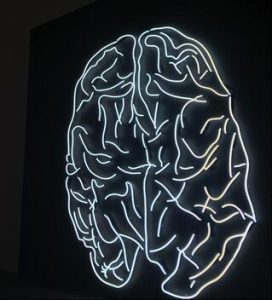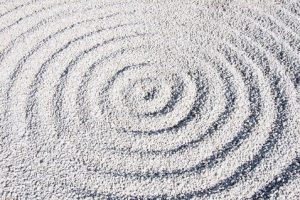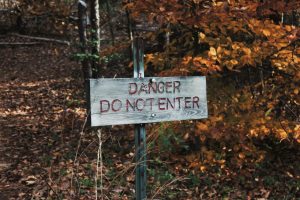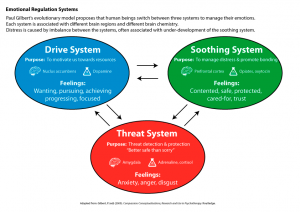Anxiety and Nightmares: How To Curb Their Appearance
Everyone Has Nightmares
Everyone has had a nightmare at one time, or at least it’s safe to say that most people will have a nightmare at some point in their life.
How old we are (developmental stage), what’s going on in our lives, and what we’ve been exposed to can impact the type, frequency and intensity of the nightmares we might experience.
In this video and blog we will talk a little about why we have nightmares as well as some ideas to help prevent and respond if you or your child are having nightmares.
I have to apologize (and laugh a bit) because my dog burst into the room in the last few minutes of the video demanding attention. You can hear her nails tapping along on the floor as she gets closer to me. It’s slightly distracting but I was on a roll and I didn’t want to stop. There will be no clickety clacking in future videos.
I promise!

The noisy culprit on our summer vacation last year
I really enjoyed creating the video and blog because I decided to ask the young people in my life. I have a demographic from 6-20 years old. My husband also wanted to share his input, but he did not quite fit the demographic of the folks I’m reaching out to – so thank you and a shout out to him for his passionate support of my practice.
Why Do People Have Nightmares?
Well the thing is, it is not entirely understood- here is what science is telling us so far:
- At night, our brain continues to actively process the daytime sensory input (what it saw, heard, smelt, tasted, felt)
- The brain connects to memories and past experiences at night
- Emotionally charged thoughts that we have during the day that the brain is still working through, like thoughts that lead to us feeling worried, scared, anxious, appear during sleep
- At night, we process thoughts and memories that we might be avoiding during the day
- Being stimulated by an image, video, or event that we continue to think about can cause nightmares
- Food intake and exercise that interact with our body and brain and impact our sleep
One thing research tells us for sure is that while we are sleeping there is still a lot of electrical activity happening in the brain which activates certain parts of our brain and that can create images and narrative (or stories) if you will, which are our dreams and our nightmares.
Routines, reassurance, protective symbols, grounding and making meaning can be helpful in coping with nightmares
Photo by Tayla Jeffs on Unsplash
When it comes to anxiety and nightmares, it is common that a person with a lot of thoughts that lead to anxious or fearful feelings can be a prime candidate for having nightmares.
It’s not to say that everyone that has anxious, negative, or fearful thoughts and feelings will have nightmares, but there is some information that states a link there. Nightmares linked to anxiety can be difficult because they may be caused by anxious and fearful thoughts and feelings, but they may also leave us feeling more anxious and fearful, thus becoming a bit of a loop.

Photo by Tine Ivanic on Unsplash
The young people I spoke to said the reasons they have nightmares are, seeing something scary, like an image or a video, or something that lead to a scary feeling could result in a nightmare. Another reason might be if they are experiencing something stressful that they are thinking a lot about or something they are worried about, it can carry over into their sleep. Also, if there is an event or a circumstance that played out and left them feeling worried or scared or anxious, it could be a traumatic event or it could be something that they’ve got on their mind, whether it be an upcoming performance or a fight that they had with someone they care about.

Photo by Anaya Katlego on Unsplash
Ways to Curb Nightmares
Food
I was curious about the possible link between food, exercise and the impact on nightmares. I didn’t find anything so specific that said “eat this and you won’t have nightmares” or “avoid this to stay clear of nightmares”, but I certainly found some information about the quality and quantity of food that we have just before bed or sleep time and the potential impact.
For example, if there is something interfering with your digestive process at night, that can impact our sleep and lead to nightmares. If there are certain types of foods that are rich in certain nutrients or lack certain nutrients that can impact your sleep, increasing your chance of having nightmares.
A quick personal anecdote, I’ve noticed a link between eating cheese late at night and having the most bizarre dreams/nightmares. There is no scientific research to back that one up, but for me it’s about noticing and being aware of how certain foods might impact the dreams and nightmares that I have.

Photo by Lidye on Unsplash
Exercise
I found information that linked exercise to the prevention of nightmares. If we exercise regularly during the day, it releases different hormones into our system and those are mood enhancing hormones. If we have an enhanced mood, then it’s more likely that our thoughts are leading to more positively experienced feelings. If we have more positive feelings, it decreases the amount of time for stress and negative thoughts. If you are not going to sleep with a lot of stress or negative thinking, then it lessens the chances of having nightmares.
Love it!
Continuing on with the exercise piece, one way of lessening the frequency of nightmares is ensuring that you are doing things throughout the day that produce happy feelings and encourage joyful moods.

Photo by Tevarak Phanduang on Unsplash
Routines and Rituals
The young people I chatted with said that it was helpful for them to have some sort of routine and ritual that is part of their bed time. Some examples of this were using prayer or some sort of affirmative statement (may I be safe, may I be free from bad dreams).
We also talked about actions that contribute to relaxing and calming the mind and body as being helpful. For example, focused breathing, massage, meditation, snuggling a pet, a bath, journalling or using essential oils.

Photo by Sarah Darweiler on Unsplash
Protective Symbols
A more commonly known symbol of protection when it comes to dreams is the dream catcher. The specific symbol isn’t necessary, if there is a symbol that works for you to introduce, it’s more about what it represents. I’ve known people to use guardian angels pins, horseshoes, crucifixes over a bedroom door and red fabric meant to keep bad dreams away- it can be anything really. The representation of the protective symbol or ritual that has to do with going to sleep and feeling protected and comforted.

Photo by Dyaa Eldin on Unsplash
Comfort and Reassurance
Reassurance from a parent or another safe person after a nightmare can also provide that necessary comfort. A simple, “I know that was scary for you”- can provide the gentle reassurance that is calming and soothing. Hugging a pillow can be another comforting action.
Dreams and nightmares can be caused by the ongoing electrical activity in our brains at night
Distraction and Grounding Practices
Transitioning from the feeling and state of having a nightmare to a more safe and settled state is really important. Thinking about something completely different or something really good may be helpful. Having a book by your bedside that makes you feel good or makes you laugh can be a great to have. If you have a younger person that has had a nightmare, you can read the story to them. and you can also place the book gently on their lap. The weight of the book along with the soothing voice as you read combines comfort, distraction and a grounding response.
You can try taking a drink of water or splashing your face with water. Colouring, writing, petting a furry friend, looking at your fish aquarium, are some other ideas and really anything that gets your mind off of the nightmare can be helpful.
Caging the Nightmare
I really like the idea of “caging the nightmare” and I’ve used it for kids as old as 11 but I think it could be a reflective exercise at any age. This is a simple art activity where you invite the person to draw a picture that represent the nightmare in some way. They do not have to put details if they don’t want to. Once they have complete the image, invite them to draw or create a cage for the nightmare in some way. Children can get pretty creative with this. I always encourage them to create a cage that is secure and strong and that only they have the power to open it if they choose. This act can be pretty helpful to prevent future nightmares.
Sometimes, once the nightmare is caged up really good, I might invite them to have a conversation with the nightmare and ask them questions like, why did they come to visit? what is it they wanted them to know? what makes them stronger/weaker? It can give some good insight on what our child is worried about or frightened of.

Photo by Aaron Burden on Unsplash
Thought Dump
Our active minds may begin to race especially at bedtime when there is a little less stimulus coming our way and things are a little quieter. Some of those thoughts may be the ones that interfere with our sleep. Having a way to write those down or draw them can be a way of getting them out so that it doesn’t carry into our sleep.
The “thought dump” is where you take your journal or something you can write or draw your thoughts out on- unfiltered, pouring them out freely for a set amount of time, maybe 2-5 minutes. This technique can literally and metaphorically feel like it is getting the thoughts out so that they are not ruminating in the mind or carrying as much weight as you go to sleep.
Sometimes it can help at the end, after you are done writing or drawing to crumple the paper up or if you are typing it on your phone doing a big DELETE.

Making Meaning, not Interpreting
The last thing that the young folks shared with me is getting to the root of the nightmare. Not necessarily interpreting the nightmare, but rather understanding and being curious: “why is it that I might be having this kind of thought? What’s happening in my life right now that is stressful that might be leading me to have nightmares? What is it that I’ve been thinking about? What are some things that have been making me feel scared, anxious, negative?”. You can entertain these as self-reflections, journaling, or talking to a trusted person.
There are links between the foods we eat, exercise, and preventing nightmares.
Ok so that’s a little bit on nightmares. I would like to invite you to share in the comments any strategies that you use that work really well to prevent nightmares or respond after a nightmare. Or, if you have a great book that you’ve used to help children or teens respond to nightmares, let us know.
If you found this post helpful, pass it on by emailing a friend or sharing it on Twitter or Facebook- Thanks!
Happy dreaming.

5 Practical Ways to Take Control of your Happiness
Chantal Côté (she/her) is a psychologist and teen life coach living in Calgary, Alberta. After over a decade in non-profit and community mental health, Chantal started Pyramid Psychology, a practice dedicated to supporting teens – a population she is constantly amazed by. Chantal is on a mission to help 100,000 teen girls (and their parents) build bulletproof mindsets so they can weather the ups and downs of life. As part of this goal, Chantal has had the privilege of speaking at various events – virtual and live – to support teens and parents.
Outside of this passion, Chantal is often in nature, writing poetry, playing ball hockey and hanging out with her loved ones.
Each week, Chantal writes a blog article in response to issues she hears from the parents and teens she connects with.
If you have something you’d like to read more on – email ideas and questions to info@pyramidpsychology.com or DM us via Instagram or Facebook.









 Chantal Côté (she/her) is a psychologist and teen life coach living in Calgary, Alberta. After over a decade in non-profit and community mental health, Chantal started
Chantal Côté (she/her) is a psychologist and teen life coach living in Calgary, Alberta. After over a decade in non-profit and community mental health, Chantal started 








































